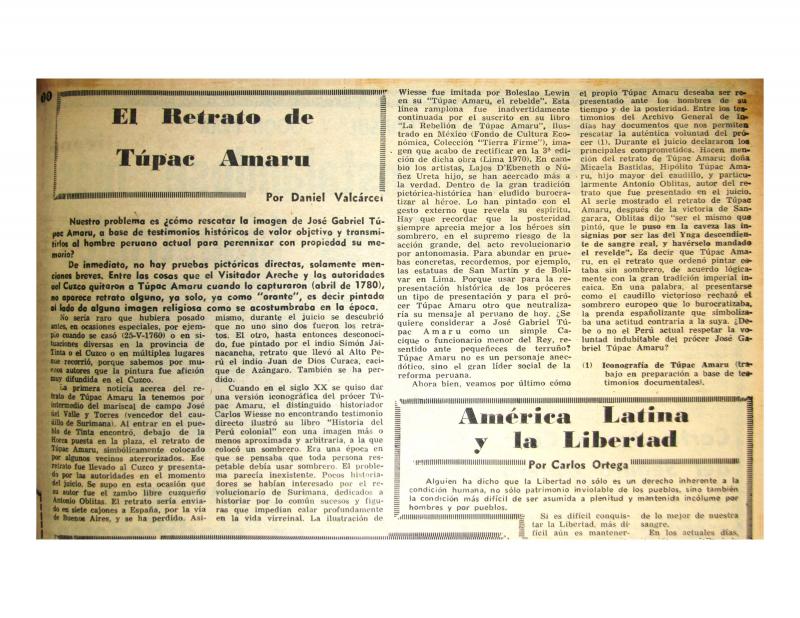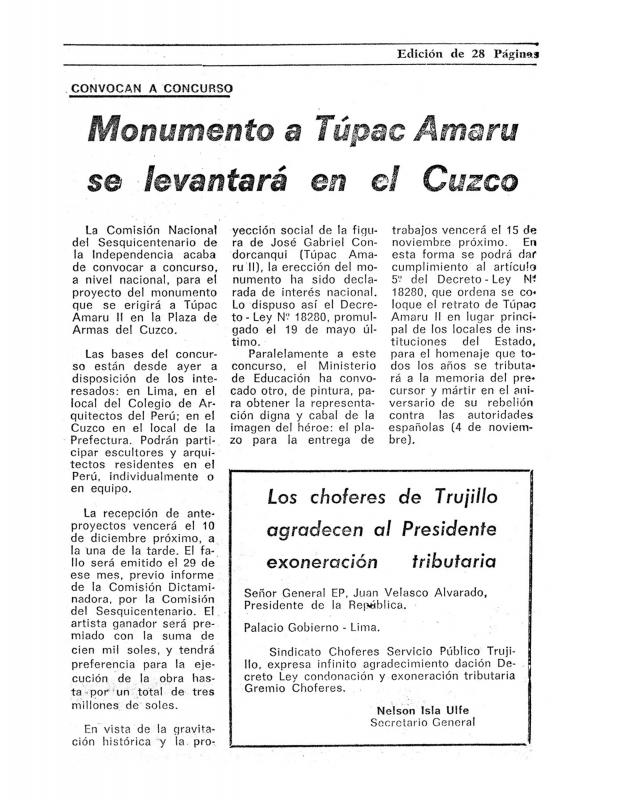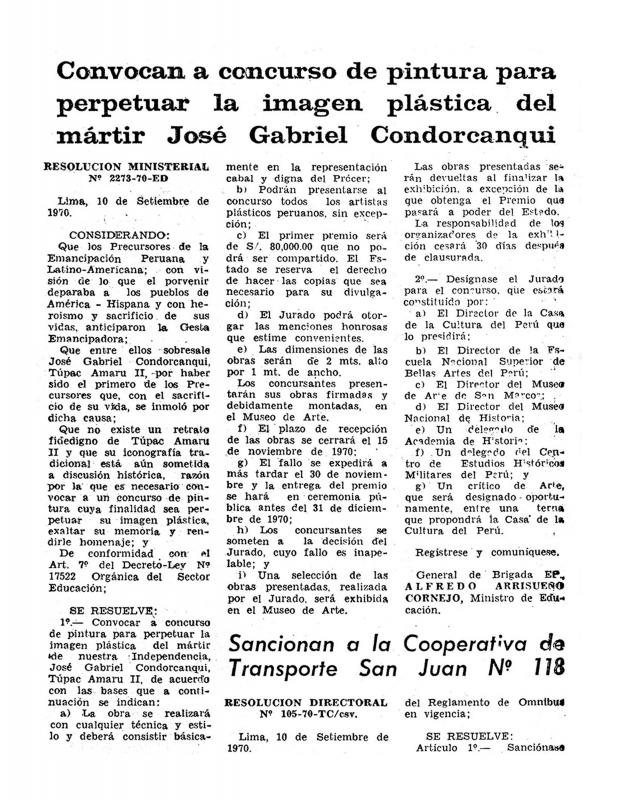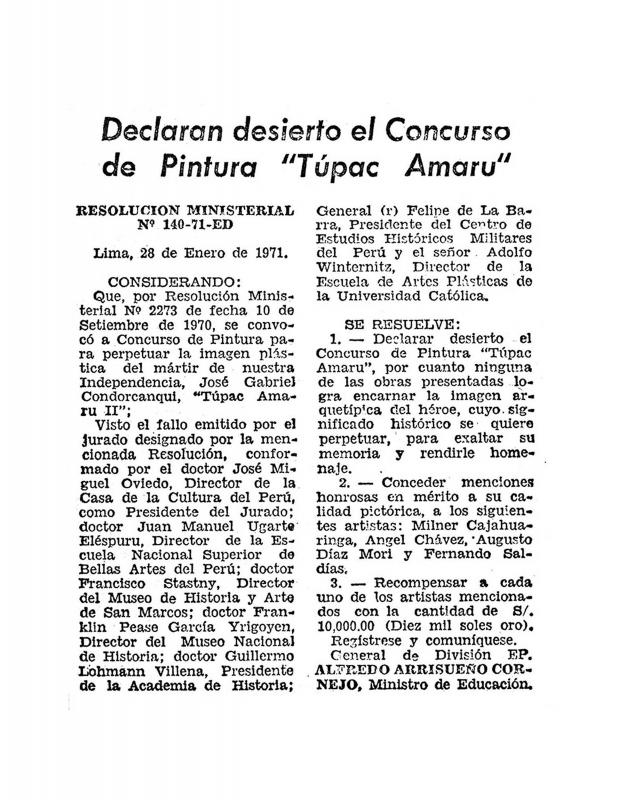This article by general and military historian Felipe de la Barra (1890–1987) seems to be a response to the paper delivered by historian Daniel Valcárcel (1911–2007) at the thirty-ninth Congreso Internacional de Americanistas, held in August 1970, where he cast doubt on whether Túpac Amaru II actually wore a hat [on that subject, see in the ICAA digital archive by Valcárcel “El retrato de Túpac Amaru” (doc. no. 1052165)]. This was not a minor concern since the image was one of the icons central to the first period of the so-called Gobierno Revolucionario de las Fuerzas Armadas led by General Juan Velasco Alvarado (1968–75).
José Gabriel Condorcanqui, Túpac Amaru II (1738–81), was a curaca or chief of Incan descent who, in 1780, led the most important Andean uprising against the Spanish empire. Largely ignored by traditional Spanish-American historiography, his figure was the emblem of the so-called Gobierno Revolucionario de las Fuerzas Armadas during its first phase (1968–75), which was characterized by social reform and by an interest in symbolic representation. The graphic representations of Túpac Amaru II, “hatted” by artists and designers, such as Jesús Ruiz Durand (b. 1940) would become key to understanding the political uses of artistic creation.
[For further reading on Túpac Amaru II, see the following articles in the archive: (unsigned) “Convocan a concurso: monumento a Túpac Amaru se levantará en el Cuzco” (doc. no. 1053438); by Alfredo Arrisueño Cornejo “Convocan a concurso de pintura para perpetuar la imagen plástica del mártir José Gabriel Condorcanqui” (doc. no. 865422), and “Declaran desierto el Concurso de Pintura ‘Túpac Amaru II’” (doc. no. 865498); (unsigned) “En busca de la imagen arquetípica de Túpac Amaru” (doc. no. 865702); and by A. O. Z. “Túpac Amaru: ¿verdadero retrato?” (doc. no. 865460)].






